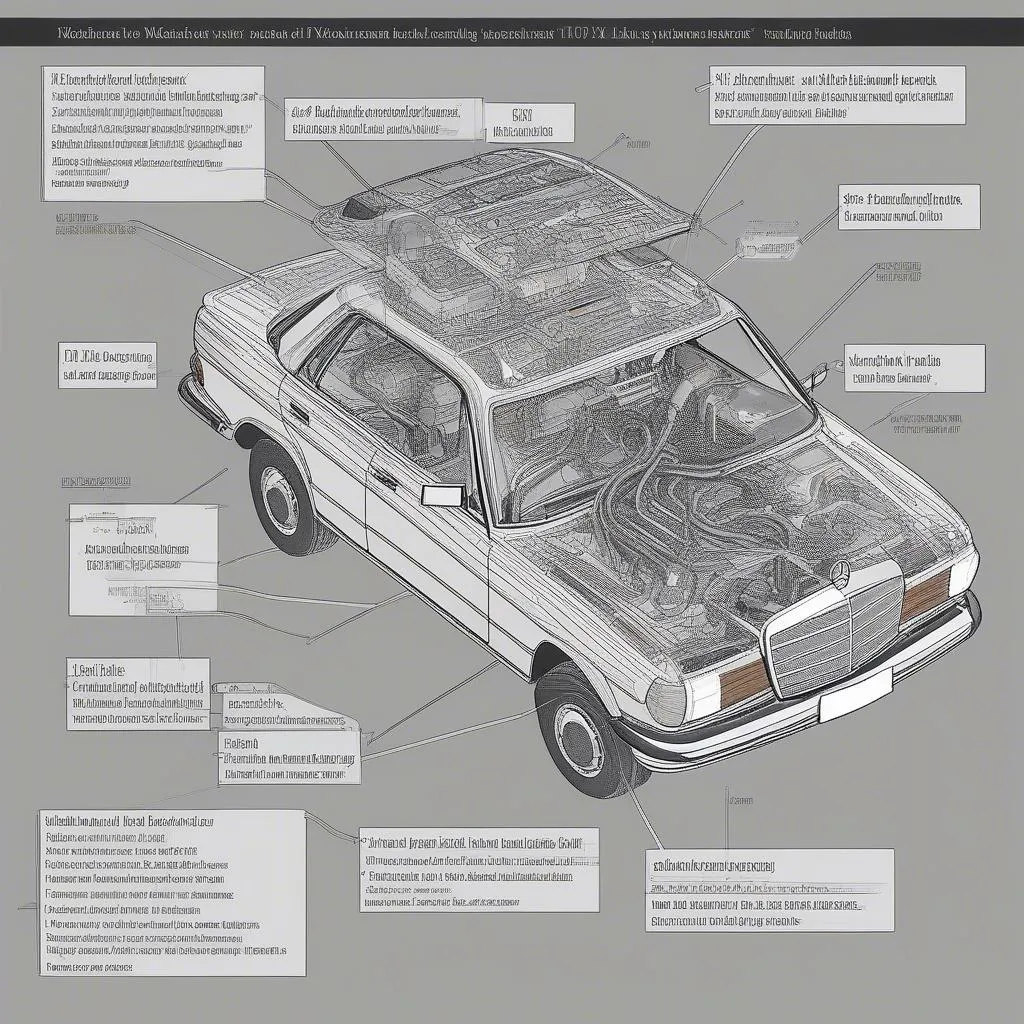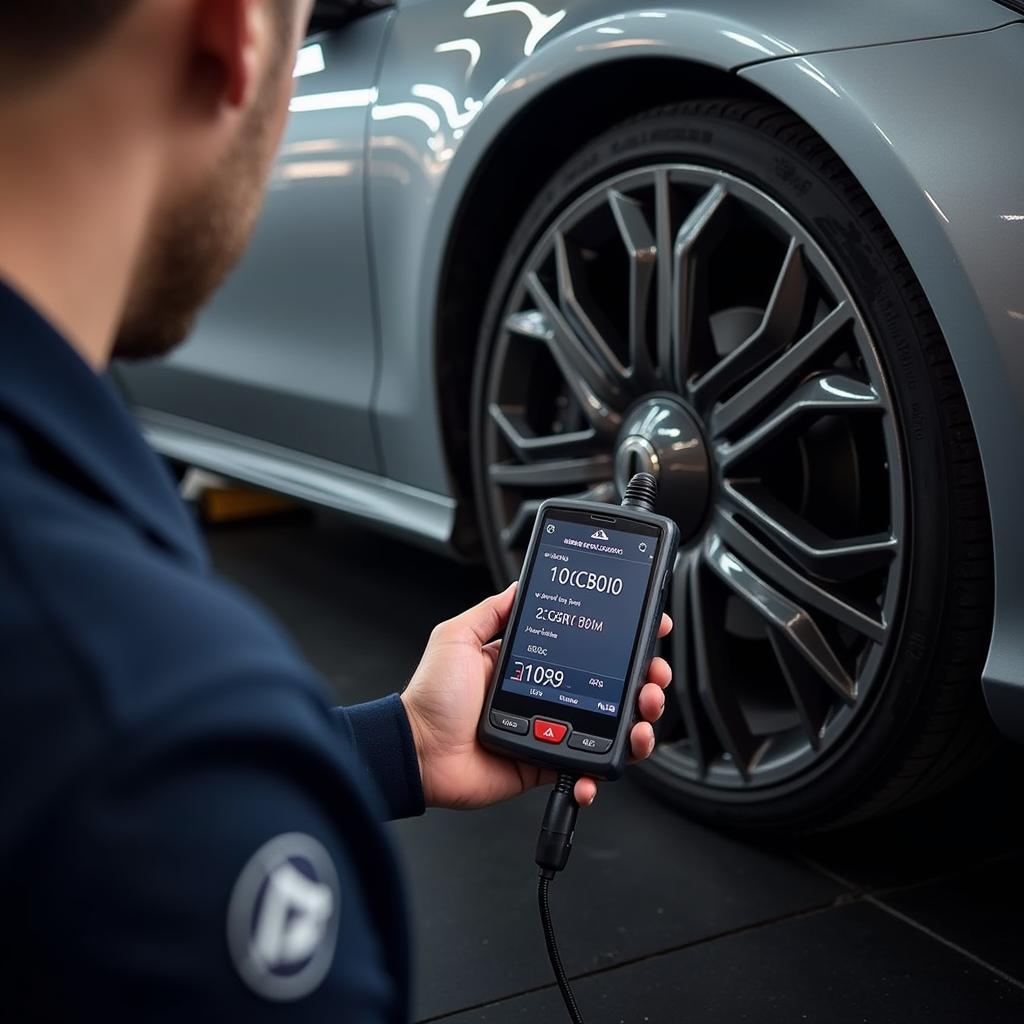Owning a classic 1991 Mercedes-Benz 500 SL is a dream for many. However, even these automotive legends can experience issues. If you’re having problems specifically on the passenger side of your 500 SL, this guide will help you troubleshoot and potentially fix the issue.
Common Passenger Side Problems in a 1991 Mercedes-Benz 500 SL
There are a few common culprits when it comes to passenger-side issues in these cars:
1. Power Seat Malfunctions: The luxurious power seats in a 500 SL can sometimes malfunction. This could manifest as the seat not moving at all, moving erratically, or only working in certain directions.
2. Window Regulator Failure: A faulty window regulator can prevent the passenger window from going up or down correctly. You might hear grinding noises or experience slow window movement.
3. Door Lock Actuator Problems: Over time, the door lock actuator can fail, making it difficult or impossible to lock or unlock the passenger door remotely or with the key.
1991-mercedes-benz-500sl-passenger-seat|Mercedes-Benz 500SL Passenger Seat|A close-up view of the passenger seat inside a 1991 Mercedes-Benz 500SL, showcasing its leather upholstery and controls.
Identifying the Problem
Before you can fix the issue, you need to identify the root cause:
– For Power Seat Problems:
- Check the seat controls to ensure they are working.
- Listen for any unusual noises coming from the seat motor when you try to adjust it.
– For Window Regulator Issues:
- Try the window switch in both directions.
- Listen for any grinding or clicking noises when the motor is running.
– For Door Lock Actuator Malfunctions:
- Test both the remote locking and manual locking mechanisms.
- Listen closely to the actuator when you activate the locks to see if you hear it engaging.
car-door-lock-actuator|Car Door Lock Actuator|A close-up photo of a car door lock actuator, highlighting its mechanical components and wiring.
Tools and Equipment
Having the right tools on hand will make the repair process smoother:
- Socket Set: To remove interior panels and access components.
- Screwdrivers: Various sizes for different screws and fasteners.
- Torx Bits: Mercedes often uses Torx screws.
- Electrical Tester: To check for power and continuity in wiring.
- Work Light: Essential for seeing in tight spaces.
- Repair Manual: A model-specific manual is invaluable for guidance.
mechanic-tools-car-repair|Car Repair Tools|A flatlay image of various mechanic tools arranged neatly on a workbench, including wrenches, sockets, screwdrivers, and a work light.
Repair Steps
Important: While these steps provide general guidance, always refer to your Mercedes-Benz repair manual for specific instructions for your model year.
1. Power Seat Repair:
- Disconnect the negative battery terminal.
- Access the power seat motor (usually located underneath the seat).
- Check the motor’s wiring for damage or loose connections.
- If the motor is faulty, it will need to be replaced.
2. Window Regulator Replacement:
- Remove the door panel to access the regulator mechanism.
- Disconnect the electrical connector and detach the window from the regulator.
- Install the new regulator and reattach the window.
3. Door Lock Actuator Replacement:
- Access the door latch assembly (may require removing some interior trim).
- Disconnect the electrical connector from the actuator.
- Remove and replace the faulty actuator.
Frequently Asked Questions
Q: Can I use a diagnostic tool to help identify the problem?
A: Yes, a high-quality automotive diagnostic tool, such as those offered by CARDIAGTECH, can be extremely helpful in reading fault codes and pinpointing the source of electrical issues in your Mercedes-Benz.
Q: My passenger window is slow and makes a grinding noise. Is it definitely the regulator?
A: While a slow and noisy window is a strong indicator of a failing regulator, there’s a chance the window track or motor could also be contributing to the problem.
Q: The power seat works intermittently. What could be the cause?
A: Intermittent issues can be tricky. It might be a loose connection in the wiring, a failing switch, or a problem with the seat control module itself.
Conclusion
Addressing passenger side problems in your 1991 Mercedes-Benz 500 SL may require some mechanical expertise, but with the right information and tools, many repairs are manageable for DIY enthusiasts. Remember, safety should always be your top priority. If you’re unsure about any aspect of the repair, don’t hesitate to consult with a qualified Mercedes-Benz mechanic.


